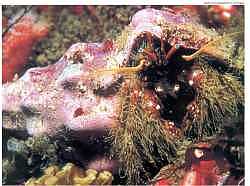 Christopher Balchin is from Ashford, Kent. He studies Aesthetic Realism in New York City and teaches history at Norman Thomas High School in Manhattan. Here he describes the response he had from pupils he taught using the Aesthetic Realism teaching method.
Christopher Balchin is from Ashford, Kent. He studies Aesthetic Realism in New York City and teaches history at Norman Thomas High School in Manhattan. Here he describes the response he had from pupils he taught using the Aesthetic Realism teaching method.
WITH more worry now than ever about children not learning, about racism in young people, and about youth violence, it is urgent for everyone to know the Aesthetic Realism teaching method.
It is based on the philosophy Aesthetic Realism, which was founded by the great American educator Eli Siegel in 1941. He stated: “…the purpose of education is to like the world through knowing it.”
And in this principle is the authentic means to meet that purpose: “The world, art, and self explain each other: each is the aesthetic oneness of opposites.”
Children, including the most cynical and defiant, become excited by the subject and genuinely kinder as they see that the subject represents a world that, through its structure of opposites, is thrillingly scientifically related to them and as they realise this they learn with pleasure and ease.
For example, symbiosis. A year 7 biology class studied how symbiosis is a dramatic and surprising relation of the opposites of sameness and difference.
SYMBIOSIS
Symbiosis is defined in Webster’s New World Dictionary as: “the intimate living together of two kinds of organisms, especially where such association is of mutual advantage.”
In symbiosis the organisms are often strikingly different but they actually help each other.
The children in this class had had a very hard time in school. Aesthetic Realism is new and kind in explaining that difficulty in learning begins with how we see the world itself. A child who feels that the world is his enemy will not want to take into his mind words, numbers, facts, coming from that world.
These children were thrilled to learn about the lives of the hermit crab and the sea anemone – two very different creatures. The hermit crab finds an abandoned shell of suitable size to live in, for protection, that is good enough to thwart most predators.
 The fearsome octopus, however, has jaws that are strong enough to crush the crab, shell and all. So what this ingenious crab does is to take a living sea-anemone and place it on its shell, because the sea-anemone with all its luscious beauty has stinging tentacles that will repel the octopus.
The fearsome octopus, however, has jaws that are strong enough to crush the crab, shell and all. So what this ingenious crab does is to take a living sea-anemone and place it on its shell, because the sea-anemone with all its luscious beauty has stinging tentacles that will repel the octopus.
The sea-anemone gets something out of this relationship too. It has more mobility and is able to travel about the waters with the crab and to have access to foods it otherwise could not obtain.
The class was made up of four different ethnic groups, and at the start of the term there had been bullying and racism, with some children making fun of each others’ accents and skin colour. Eli Siegel explained the cause of all cruelty. It is contempt, the: “disposition in every person to think he will be for himself by making less of the outside world.”
CONTEMPT IS ORDINARY
Contempt is as ordinary as not listening while someone else is talking, and takes many forms in both pupils and teachers. It’s crucial for educators to know this.
I asked the class: “What would happen if a hermit crab looked at a sea-anemone and thought, in the way that a prejudiced person might think: ‘You look different – who needs you?'”
“The octopus would eat it!” they said.
“These two creatures are different but they add to and need each other,” I said. “Does this show that what is different from us can add to us and make us more who we are?”
The children agreed thoughtfully and went on to eagerly give examples of how needing the world made them more themselves such as needing the sun, oxygen, friends, food, music and such.
Young people are yearning to feel that the world does make sense and that different things (and people) can add to each other’s meaning. Through this lesson that is what happened.
In other lessons we studied how, for instance, the human skeleton is an amazing relation of firmness and flexibility, with a ribcage strong enough to protect the heart but which expands and contracts every time we breathe.
FEELING & FACTS
Pupils from one of the most economically deprived areas of New York City came to love biology, and they remembered the facts. Not only that, but these young people came to have a new sense of fellow-feeling, started listening to each other and came to view people of different cultures with respect.
This method can be used to teach any subject at any level. It has been used with great success over a period of 25 years and is taught in bi-weekly workshops in New York City. You can find out more about it at www.AestheticRealism.org or by writing to the Aesthetic Realism Foundation, a non profit making educational foundation, at 141 Greene Street, New York, NY 10012, USA.

